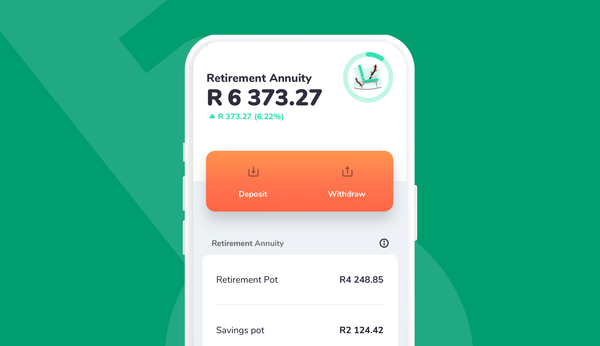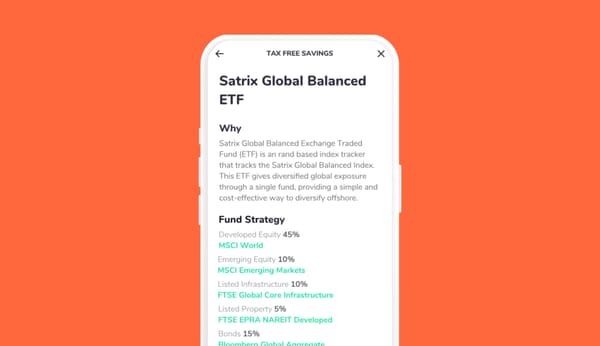You can listen to Francly Speaking on your favourite podcast platform each week.
ETF stands for exchange traded fund, which tells us a bit of what it is: it's a fund that's traded on the stock exchange, exactly like a share is. The difference between an ETF and a normal share, though, is that a share typically gives you exposure to only one company.
For example, if you buy shares in MTN, you are exposed only to MTN. However, ETFs are made up of a basket of assets (most often shares). When you buy an ETF, it is almost the same as buying all of the shares that are in the basket.
ETFs constructed around an index
ETFs are generally constructed so that they replicate the performance of a specific index. For example, the Satrix Top 40 ETF (Franc's local equity fund) replicates the performance of the JSE Top 40 index – the aggregate performance of the 40 largest companies listed on the JSE. The Sygnia Itrix S&P 500 ETF (Franc's offshore equity fund) replicates the performance of the S&P 500 index, tracking the performance of more than 500 of the largest companies listed on stock exchanges in the US.
Larger companies carry more weight than smaller companies in the index, so when they move up, they generally have a bigger impact on the fund price.
Let's put that into an example. Say we have three companies:
- XL Ltd,
- ABC Ltd, and
- DEF Ltd
We want to construct an index that replicates the share price movements of these three companies. To make it easy, lets say that XL is worth R50m and the other 2 are worth R25m each. In total they are worth R100m. On this day we can say the index which tracks their movement has a value of 100.
The next day, the values of these companies change as their share prices change. Let's say that after the market closes, XL is now worth R45m, ABC is worth R27m and DEF is worth R30m. In total they are now worth R102m. This means the index now has a value of 102. XL was initially 50% of the index (R50m/R100m) but as it lost value, it became only 44% (R45m/R102m). The weighting of companies in the index will change over time as they become bigger or smaller relative to the other companies in the index.
Indices are rebalanced quarterly, which is when the weightings are updated. This also means that sometimes companies fall off the index and are replaced by companies that have become larger than them over the quarter. As the companies pay dividends, the fund collects these and pays out to unit holders over the course of the year.
What do I own when investing in an ETF?
When you invest in an ETF, you will own shares or units in the fund itself. The fund then owns shares in the underlying companies which are part of the index.
So if you are invested in the Satrix Top 40 ETF through Franc, you own units in the fund. The Satrix Top 40 ETF will own shares in Naspers, Standard Bank, MTN and other top companies listed on the Johannesburg Stock Exchange, and its share price will move up or down as the prices of the shares it owns move up or down.
What are the benefits of investing in ETFs?
- ETFs offer diversification. Investing through an ETF can give you access to a diversified portfolio of assets from the get go, even though you are buying just once. Get our guide to what investment diversification means.
- When you invest in ETFs, you're automatically investing in top picks. You don't need to try pick what individual shares to buy – this can be time consuming and risky if you don't know what you are doing! In the case of an ETF, you know that you're investing in the top companies in that specific market.
- ETFs are low cost. ETFs are generally low cost because they are passively managed. This means that the shares held by the fund just have to follow the composition of the index and there aren't people who are employed to actually pick what shares the fund should hold (this is called active management and these products are generally more expensive as these fund managers are not cheap to employ!).
- There's added transparency in ETFs. Given you will know what index the fund is tracking, you will always know what shares the fund is holding.
What are the drawbacks of investing in ETFs?
- There can be trading costs and spread. Depending on who you buy your ETFs through, you might have to pay trading costs on your trade. If you are buying and holding for the long term, these are less important as you only pay these when you are buying or selling (they are once-off costs). You should also be aware that when you are buying or selling, the price you will trade at will have to match with someone on the opposite end - ie. if you are buying, someone must be selling. Smaller ETFs can have large gaps between what a buyer wants to buy at and what the seller wants to sell at (bid/offer spread). This can sometimes be a hidden "cost" as you could end up paying a higher price or selling at a lower price but can be avoided if you stick to a larger, more liquid ETF, like the Satrix Top 40 ETF.
- Not all ETFs are created equal. An ETF can be judged based on the index the fund is tracking and how well it actually tracks the index. ETFs can also be high risk. For example, if you invest in a gold ETF, it will go up or down with the gold price, which can be very volatile!










